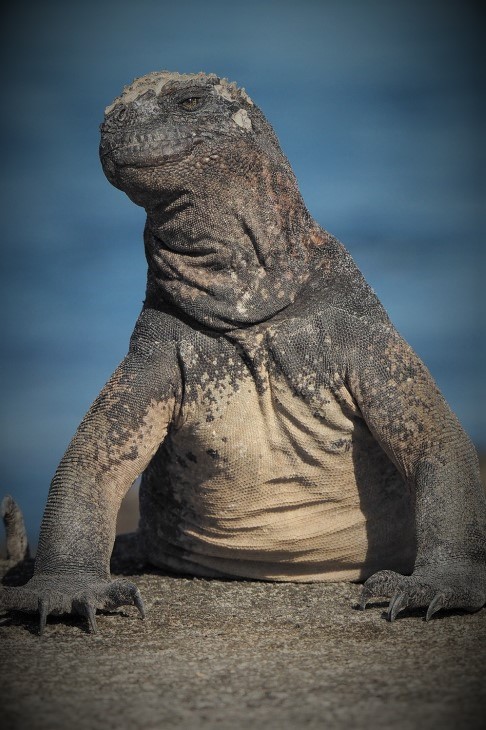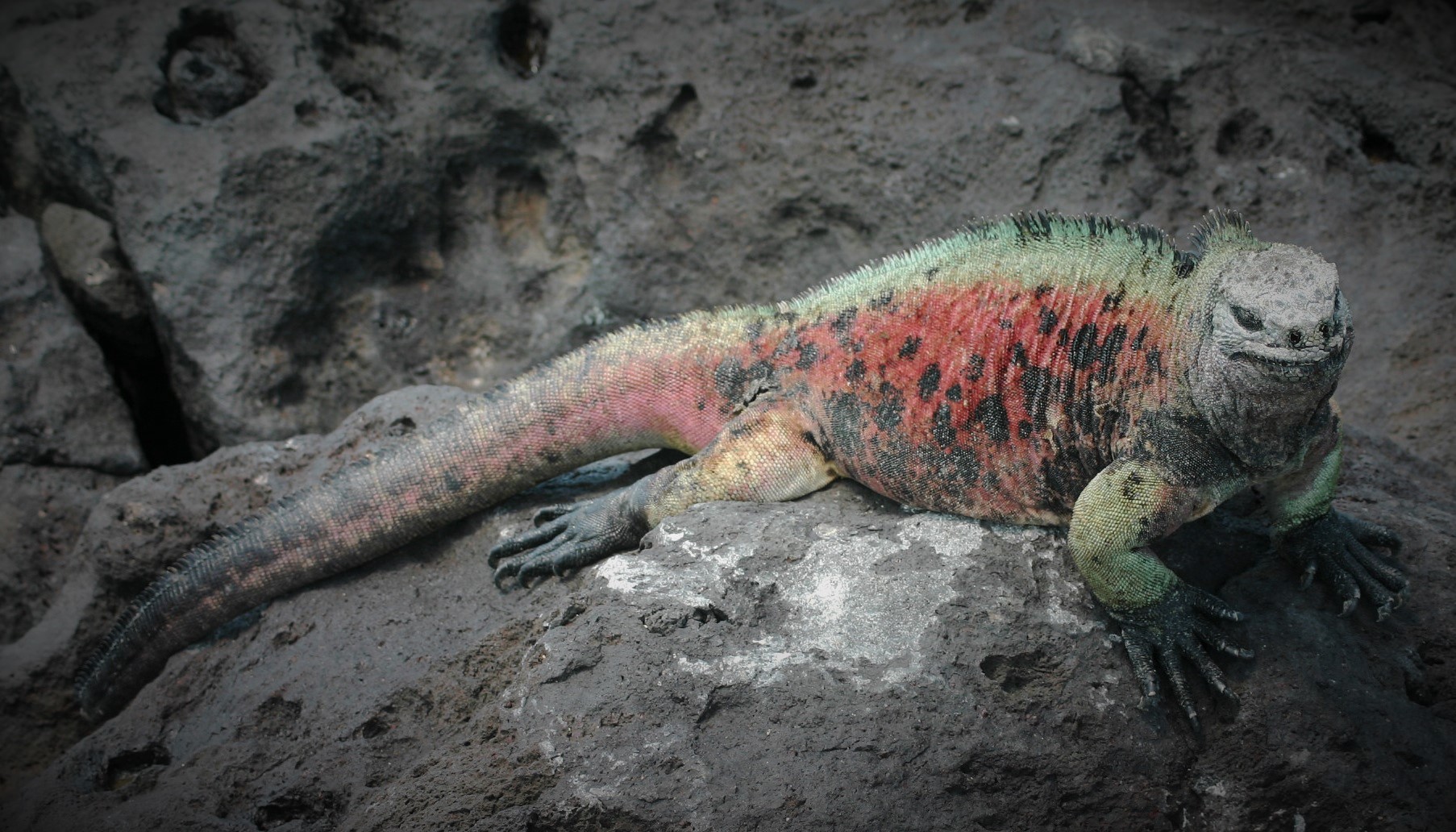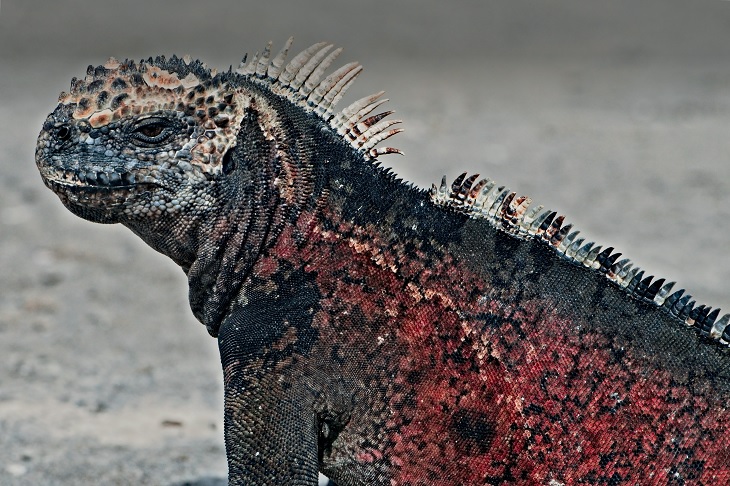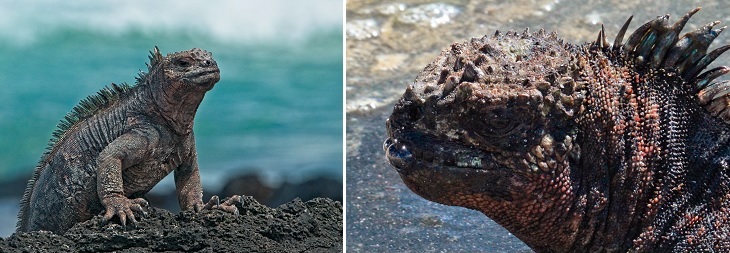
SIGN UP TO RECEIVE
15% OFF
IN YOUR NEXT TOUR

Here Be Dragons: A personal log of Floreana Island
SCROLL DOWN TO READ

Here Be Dragons: A personal log of Floreana Island
SCROLL DOWN TO READ
Here Be Dragons: A personal log of Floreana Island
Dating to 1510, the Lenox terrestrial globe is believed to be the origin of the phrase (Latin) hic sunt dracones [1] [2] or --- Here be Dragons !!! In general, this expression was used into the 1700’s by navigators and cartographers to warn of unexplored and potentially dangerous lands. Try as I might, I could come up no more apropos phrase than Here be Dragons to describe my walk across Floreana Island in the Galapagos archipelago. Floreana (also called Charles Island, or Santa Maria Island) is so named in honor of Juan Jose Flores; the first President of an independent Ecuador. It is arguably the island with the most colorful history, including the remnants of a post office dropbox initiated by 19th century whalers. To this day, tourists to this island can leave letters in that same barrel with hopes that future visitors will forward their notes worldwide.
Alluring rather than dangerous, but still very much unexplored, Floreana is the smallest of the inhabited islands in the Galapagos’ measuring only 173 km2 (and at present, only 135 permanent residents) and one that only a small percentage of tourists to the islands have the chance to see. I was privileged this past December to join my good friend and long-time Galapagos guide, Paul Vegara of EquinoxTours, on a sojourn to Floreana. Immediately on disembarking, we were sharing rock with what has become my favorite of all the unique animals that are indigenous to the Galapagos’ islands Amblyrhynchus cristatus, the Marine Iguana.

Well known among biologists and naturalists alike as the seed of the idea of natural selection by Charles Darwin, and still considered by biologists as a living laboratory for evolution, Galapagos is home to many animal and plant species that colonized these volcanic lands by mere chance, and which survived against all odds. The result is a unique set of organisms with adaptations to exist here, specialize, and flourish. Each has its own particular strategy, but the Marine Iguana for me has become the model animal to explain such adaptation, and within its own right, a marvelous story of natural selection.
Marine Iguanas are mostly closely related to the Galapagos land Iguanas (Conolophus sp.), and both share ancestry from the spiny-tailed iguana (Ctenosaura) of the Ecuadoran mainland. By comparison to the mainland, the geologically young Galapagos Islands show sparse vegetation, poor or non-existing soil, and critically limited available rain. Simply stated – little to eat. As theory suggests, geologic or storm action from the mainland could have washed rafts of vegetation into the pacific, carrying within either fertile eggs or breeding pairs of Iguanas from the mainland. Currents would then have pull these rafts further west into the pacific, and the odds of having landed on these young volcanic islands instead of continuing out to sea (some 900 km) were very low. And of course, there was then the problem of survival upon colonizing a new land.
There are four species of endemic Iguanas found on the Galapagos Islands (one marine, and three land species: Conolophus subcristatus, C. pallidus, and C. marthae. Land Iguanas, are physically larger than the marine species; approximately one meter in length and 13 kg [3], lighter in color, feed on cacti and show the overall morphology of the terrestrial species from the mainland (rounded tail, shortened dorsal spines, and short yet thick claws designed for digging).

The unique adaptations found on the Marine Iguana are the result of selection for feeding underwater seaweeds and algae as the nutritive substitute for cacti and terrestrial succulents. The series of adaptive strategies for this are many. To begin, there are the cold pacific waters. Iguanas, like other reptiles, are poikilothermic animals, wherein their body temperature in regulated by the environment. Marine Iguanas are for the most part black in color, although there is some color variation among the subspecies of the various islands. Marine Iguanas in the southern islands (including Floreana) are notably more colorful.
This dark pigmentation aids in the absorption of heat. After feeding underwater, Iguanas will climb onto the rock and ‘sun’ to regain their optimal body temperature. When getting too hot, they display a behavior that is best described as doing ‘push-ups’ (figure 5) to send a current of air under the body and cool down, and when the heat is too extreme, they return to the cool waters once again.

The series of dorsal spines along the backs of Marine Iguanas are much longer than the spines of the land varieties. This is believed to afford greater surface area for heat exchange. For climbing on the rocks, and perhaps more importantly, being able to hold on to the rocks when feeding underwater in the surf zones, Marine Iguanas have evolved long claws by comparison to their terrestrial lineage.

They also have evolved flattened tails – much like crocodilians for swimming. But by far, the most unique adaptation is a modification of the circulatory and excretory systems to eliminate salts from the blood. As Marine Iguanas feed underwater, they naturally take into the stomach a great deal of salt water. Like most animals, they cannot process the excess salts in the kidney, but they have evolved a method (found some marine birds, marine turtles and salt-water crocodiles, and even in some species of sharks and body fish) to eliminate the excess salts from the blood. The so-called ‘tears of the mock turtle’ in Alice in Wonderland are in reality salt extrusion glands under the orbits in crocodilians. Similar tears can sometimes be seen dripping from the nostril of a sea gull. High concentrations of blood are eliminated at these eye or nasal glands by tissue bearing chloride cells, which can actively export salt. These same structures were selected for in the nasal glands of the Marine Iguana. Typically, we see Marine Iguanas ‘sneezing’ as it would appear, but what is expelled is in actuality a slurry of salt that was absorbed in the gut and brought to the nasals septum by the blood.
As such, they maintain the typical salt content of the land species, and of their continental ancestors. It is a fascinating thing to see, and a marvelous depiction of one of nature’s finest themes ‘find a niche---- and fill it’.
Reference:
1. De Costa, B.F. (September 1879). "The Lenox Globe". The Magazine of American History. New York: A. S. Barnes. 3 (9): 12.
2. "Le Globe Lenox", Bulletin de la société normande de géographie (Oct–Dec. 1879), pp. 216–228.
3. Swash, A.; and R. Still (2000). Birds, Mammals & Reptiles of the Galápagos Islands. Yale University Press.
